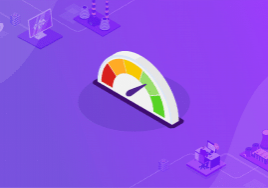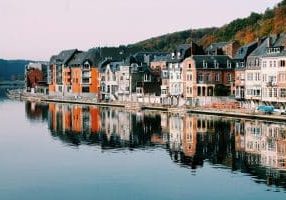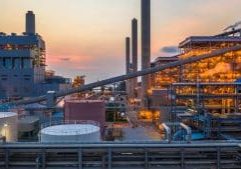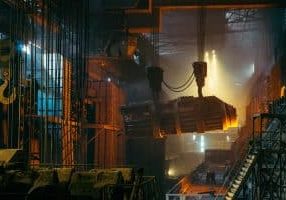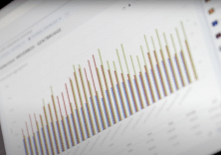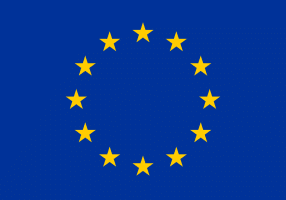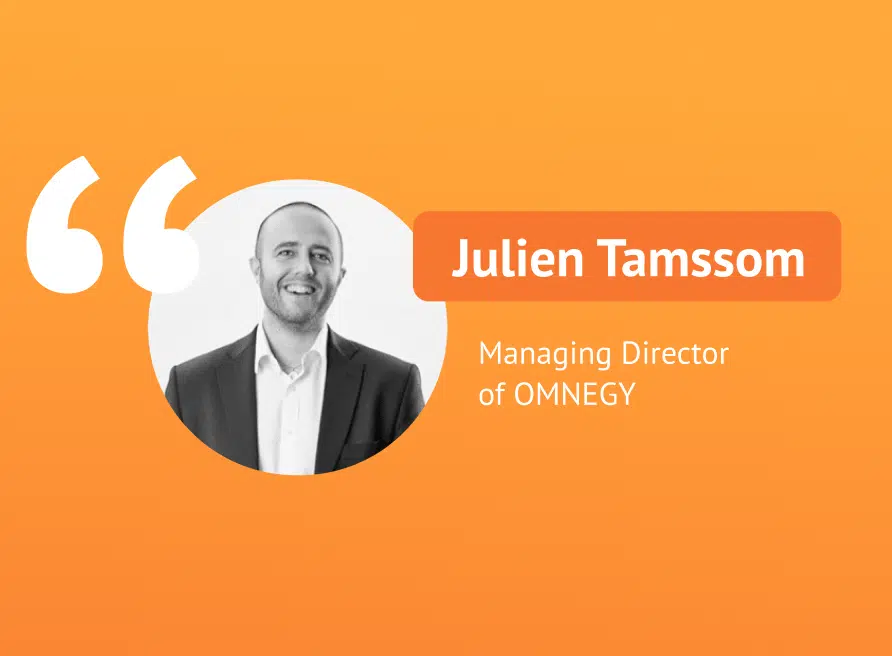
Given the overload of information relating to the current energy crisis, we turned to Julien Tamssom (Managing Director of OMNEGY) to hear his perspective. OMNEGY is a Paris based energy consultancy, which aims to give their customers a 360 view of energy matters. Their mission is to help companies and communities negotiate and improve their energy contracts, save energy, and reduce their environmental impact.
Read the full interview to discover his knowledgeable insights on how OMNEGY have been helping their clients during the current crisis, how their missions have changed, what he foresees in the future of the energy market, and its relationship to everyday business missions.
How are you supporting your clients during the current energy crisis?
The first thing we have done is encourage our clients to buy as early as possible. It was clear that there was a problem of liquidity on the market and a problem of supply. At the beginning of 2022, people thought that it would be a relatively short term problem concerning the war in Ukraine. Even all the way throughout the summer, a lot of prospects believed that things would calm down, or that the State would intervene. However, this has not been the case.
We also try to inform our clients of the broader context as much as possible. Both in terms of energy prices, but also economically in terms of state action. We can now see that in France and in the UK, but less so in Germany, that the State cannot pay for it all. This is quite contrary to what we saw during the covid crisis. The amount at stake is huge, and the Iberian solution of sponsoring gas prices for power generation has huge consequences in terms of gas demand. In this type of context, we will help our clients get a better perspective.
We especially want to avoid the “savior symptom.” The idea that someone will come and save us, so we will delay our response to the crisis as much as possible. For example, in France the situation has been very complicated. L’ARENH (Accès Régulé à l'Electricité Nucléaire Historique), which gives access to nuclear energy at a cheaper price, has become unavailable because of the closure of nuclear plants for repair work. We have seen a huge percentage of French companies have not yet taken a position for 2023. Whereas, our own customers are now even taking a position for 2024 as well.
We have been providing our clients with context, negotiating with suppliers, looking at consumption to try and identify the first and biggest leverages for energy savings, and providing explanations to provide them with more knowledge so that they can make their own analysis.
How can energy users act in the face of rising energy costs?
The key to taking action in the face of rising energy costs, is to understand how the price is built.
If I take the sum of the parts, there will be an obvious part that comprises taxes. There will be some sort of levies to finance the network. For instance, you have to pay for the maintenance and amortization of the pipelines. This price is relatively fixed nationwide, even across Europe.
And then, inside the commodity price, there are several layers. You have the first layer which is your baseload. This requires very flat energy consumption There will also be some peak consumption, which will have a different price depending on where it is. And then on top of that you will have a price insurance premium. That is what your supplier will charge in order to guarantee that whatever your consumption, the price will stay the same. That is your insurance.
What we’ve seen is that the insurers have had huge difficulties to maintain those prices. In the UK, suppliers have become bankrupt. In Germany and France, suppliers have also lost money. In Germany, there have been nationalizations, and in Switzerland, AXPO received 5 billion euros of liquidity. These examples show us that insurers cannot keep up, because volatility has gone up. This volatility in energy prices has been growing for years, even before the war in Ukraine. However, because it’s a marginal price, buyers have not changed their behavior in response.
So, the first thing to act on is the volatility. The last thing you want is to have volatility on a price that you do not control, and volatility on your consumption. That would be catastrophic, and this is more or less what appears to be happening.
At the macro level, what we see for example, looking at the French analysis from RTE (Réseau de Transport d'Électricité), is that it’s not so much the quantity of power that is the problem. It is rather, when we consume it.
For gas, it is a different problem, because we had the issue of lower delivery from Russia that has been replaced by LNG (liquified natural gas). France has the capacity to bring that LNG. For Germany, it’s not so much the case. This means that soon France will become a net exporter of gas to Germany, while historically, it was the other way around.
What we see is that we have a requirement to reduce our overall gas consumption, rather than our energy consumption. This is happening already as we’re switching the energy we are using.
But for power, it is when we consume that is the issue. If we look at the RTE analysis, we can clearly see that the largest peaks are at 9am and 7pm. We want to reduce those peaks and flatten the curve.
So the best way to reduce energy costs is to master when we consume it. This is crucial. Maybe at an individual level it’s a bit funny to talk about when we do our ironing or when we use our washing machine, but for companies, it’s a different type of issue. It’s not so much about consuming less. The old ways are behind us. You have to clearly understand your consumption and where your limiting factors are. And now it is really a requirement to understand the market better.
But the first thing energy consumers can do to reduce the impact of volatility is to buy ahead. This means buying earlier, buying in clips, or in several loads, rather than buying all at once close to a deadline. This is especially important when you have an obligation to deliver. For example, if you have an order book or an expected turnover. Unlike before, we now see our buyers arriving, and in their head they already have a view of at what price they will stop production. This is a big change and has become a major topic.
While we used to talk to buyers, we are now talking to managing directors at board level, about the long term impact. They need to first master the volatility of the market, and secondly start taking control of their consumption. The first thing to do is to reduce it when it’s obvious, the second thing to do is to understand when they consume, and their peak times. They must then try to move their peak to cheaper hours. If you want to reduce your energy bill, you could have bought your energy bill 2 years ago. But what you could also do, is move your peak from 9am to 11am, or the end of the day to around 2pm. With the development of solar power, we anticipate that the 2pm to 3pm price will go down. And what you will see is that if you can move a chunk of your consumption on that cloche bell, you will save a lot on your price.
In terms of your own missions at OMNEGY, how have you been impacted? How have things changed on the other side?
Our work has been more difficult, and we are having more difficult discussions. This is especially the case with buyers on industrial sites, concerning when to stop consumption and understanding how the competition is buying. Our customers are usually in a good situation because they bought much earlier. Nevertheless, prospects we talk to are in a tough position right now.
But on the other hand, there is a positive side too. It’s a price signal. And the price signal is now that there is not enough power or not enough gas. Is this not the signal we were trying to create a few years ago with the CO2 tax that was anticipated? Is it not what we were supposed to receive?
Although it was less brutal, we anticipated it. Had we worked a little bit more on energy prices before, via government penalties, we would have been able to transition early. And for me, that’s the main point. Now the topic is clearly at the top of the agenda, and it is staying at the top of the agenda.
My concern is that government subsidies, which are necessary, because the price went up too quickly, may divert from the fact that customers have to act. We can take the French example of the décret tertiaire. The intention of the obligation is to reduce tertiary energy consumption using energy efficient solutions. It is true that you can install solar power, which you can self consume in order to reduce your consumption on the network. By producing your own energy, you can quickly find a way to be on target. However, the problem is that you’re not acting where you’re supposed to be acting. Also, you can’t walk away from the fact that you need multiple solutions.
You can perfectly use solar panels and generate electricity, but I don’t think that the best thing to do is to self consume it. It would be more virtuous to put it back onto the system. The pricing of the system would tell you when to consume and at what price you would consume. It would be more effective to use a price signal. Your solar power would go onto the network, which you would use to pilot your consumption. Nevertheless, most would look for self consumption when installing solar panels. The power generated would go back as a net of consumption, and the company would look like they’re consuming less. But this actually creates more volatility on their consumption, because now they have the volatility of their own, plus the one from the solar panel. The solution would be to act on when they consume, and to consume when the solar panels are operating. This goes back to my point about when you consume and taking control of that. It’s very theoretical and difficult.. You can take steps to make the switch, but the principle is that you are rewarded by the network to not consume.
So, as an industrial customer, if you are able to consume less, or much less suddenly, you will receive a warning. In this case, you can sell the option to the network, and you would get rewarded for the option. You get paid if the option is executed, and the option is to ask you to stop consuming for a certain time period. I think it’s good, because you receive a price signal to change your consumption. And this is exactly the type of reward that the system that will help companies act on a macroeconomic level. The price signal is in a way beautiful mathematically. It’s just 1 number and it gives you a huge amount of information. This is something that is coming and they have to use that in their way of looking at their business.
So the market has become volatile and you have volatility in your consumption. If you can try to use one to head another, you are well ahead of the pack. That’s how we try to help our customers.
What’s the role of digital and data?
If you are a baker, you could use your Eco2mix app. You go on your app and it tells you the system price and at that moment if power is coming from wind or solar. You could imagine you have a supplier with a market price, and with that you can organize your rounds of bread. But most companies don’t do that and most bakers certainly don’t have the time to do that. And most companies want to have their price more or less fixed, so it’s like a price bucket depending on when you consume.
What we are seeing is a huge influx of data. We have seen that the supplier as the price insurer, has been unable to do what they were doing before because of the crisis and price voltaility. As a consequence, we’ve seen quantity commitment contracts, and a reduction of flex clauses. Because of the impact, the supplier has moved the risk to the customer. This means that the customer has to learn more about the market because they are taking much more of the risks. All the data that the suppliers are currently dealing with, is going to be put in the hands of the customer sooner or later. This is because the customer is the one who has the leverage to act.
No supplier can understand their customers to the extent that they can tell them to make specific changes in their production process. They wouldn’t be able to say “switch on this machine, move onto this, change your production planning etc…” It’s completely impossible at this level. One way or another, the responsibility is going to go into the hands of individual companies. They’re going to have to take many factors into account: the market, the contract, the commitment, the opinion they sold or bought, their commitment to the strategy, and their production planning. This creates a lot of data.
In France, we have roughly 4 or 5, or sometimes 8, price buckets. You can imagine that those price buckets are going to go up more and more. This means that you’re going to have a huge quantity of data, which you’re going to have to manage. At the moment there are a lot of solutions around monitoring, and I think that it’s a step in the right direction, but you’re still looking at the race, you’re not running it. The key is to take action. It’s got to go further than digital. It must be about linking the data together, understanding how they interact, and be clear about your strategies, because you will have more than one depending on what’s happening.
What do you predict for the future of the energy market?
Ok, we’re going to talk about Europe to start with. I will start with a more grim view, but then I will be a bit more optimistic.
The grim view for me is that first of all we had the issue of less gas coming from Russia. Now we also know that Nord Stream 1 and 2 have little holes inside. That’s not going to come back soon. We know that LNG can replace some of that, but not enough. We predict that next winter will be even more difficult than this one. We can count on climate change to help us a little bit with warmer winters, but it’s still a significant risk to take. We can also see from the UK example, and for me that was a huge thing, that IMF getting involved in the UK budget is a significant change.
We went from the covid era where the State covered and took care of the economic system in times of extraordinary change, to now, where we are seeing significantly less economic support. If we compare the German, UK and French budgets, we see a significant difference. There are concerns about the bankability of the State, and so I think that what is coming is not pretty. The US elections will also create some volatility, in a more political sense. And so I think there will be a VUCA world. There’s going to be more volatility and uncertainty. It’s going to be complicated.
Having said that, when you look at data, and more specifically at climate data, we can see some first results in terms of consumption reduction. So I do hope that there’s been an awareness raised. I think that it was difficult for the system to be able to adapt on time because the increase was too brutal. There will be difficult times coming. It’s not the first time there will be an economic crisis on the back of an energy crisis. There were a couple in the 70s, but it’s the first of my generation so to speak. It would require some in-depth action, and in-depth consequence. What I see coming is that better awareness, but the speed of the change has been too quick for the system to adjust.
Where do you see more renewable energy fitting in the future?
We are in a position where we need it all. We shouldn’t discount one option for another.
Yes, there are some problems. For example, there is an issue of acceptance in many countries. We can look at biogas for instance. Each country has a very different strategy. Germany has been very much pro biogas. France said it was pro biogas but, this year, in short, they sold their gas to the State at a certain price, which used to be higher than the natural gas market price. The market price went up, their price didn’t, and they got completely squeezed by the increase of power. So right now in France we’ve actually lost the production of biogas, to the point that it has slowed down our transition. Concerning wind power, we’ll see. I think it’s a bit more complicated for acceptance.
There are many sources of renewable energy, but it’s not the only leverage. There are also batteries that can help you master your consumption. Not necessarily when you produce, but can help you to start saving energy between when you produce and when you consume.
There are many options on the table and I think they’re all good. But what has become a necessity more and more, is to understand the impact better. For example, in Paris many people have switched to bicycles, which is a good thing. But most people who have switched to bicycles used to use public transport. Not many people switch their car for a bike. You really have to understand the way in which energy is consumed in order to adjust your strategy.
I can take another example. We had a famous energy minister in France, Madam Royal. She had the idea to create solar panel roads. It did not work. You could have tested it much quicker than spending millions on a proper road. Obviously when a lorry drives on it, the solar panel will get damaged quite quickly. There is no need to go on idealistic views. You should test, see what works, keep what works, move on, but you can’t close any option, including production, consumption, and process.
We need to look at all the solutions, not just renewables. You don’t need to look at only one type of renewable being superior to another. Nuclear power clearly has its play in the mix. Gas probably has some place in the mix. I assume coal also has a play in the mix. The point is to understand what the most effective approach is for our long term objective, which is decarbonization. You can’t just be dogmatic in one way in the beginning. You need to have a very broad pool of options when searching for solutions.
For you, if we talk about energy resilience, what does it mean to you, and how can organizations prepare?
For me, the key is not so much energy resilience, but rather business resilience. It’s business resilience in an environment where, as the head of a company, you need to consider many factors such as your customers and your reputation.
If I take the example of a marketing team, its scope has become so wide you could even ask whether it is still a marketing team or just a business team. If you look at the IT side, it used to be only about the computer, mouse, and keyboard. But now we are going very wide into data. If the IT team has a data strategy, then that data goes very far into your business. You will have a similar situation with energy. Energy is having an impact on the whole business.
In the current context, it’s necessary to take an overall view of the company. It’s not just the price of energy you pay. It’s also about where you source it from, having a mix yourself between your PPAs, and considering what’s on the market.. You’re really going to have to do the job of a supplier. You have to gather every site into one big demand, do a forecast of that demand, and then go on and source it from different places. This is what we call a mix, and you would mix your sites and you would mix your supplies, and then make them match as closely as possible.
At the moment you can see in the luxury segment, companies are choosing their suppliers based on their green credentials. This is good, but only the luxury business can afford to do that because there are huge margins. It’s not something that’s going on everywhere. It’s our belief that it’s going to become the responsibility of each company to understand the mix of their power sources, where they consume, why they are consuming, and to understand how that links with customers and products.
We can look at carbon assessments as an example. They are called assessments, but they don't really assess anything. It’s a measurement over 1 year roughly, of the carbon equivalent of your consumption and your product. What we see as a more effective leverage for action, is helping companies understand what is inside the product, how it is used, and what would be the long term effect of that carbon. When you do this type of analysis, you measure the impact of the energy on your product, and that’s where I think we need to move to in terms of business resilience. This all being in relation to the volatility of prices and consumption, but also of our bigger goal, which is decarbonization.
It’s interesting how you say that the solutions are more holistic. Often it seems that people say there is just one solution, but actually it’s more nuanced…
The State has to guarantee something, but it cannot provide the best solution. The State must provide some sort of reliability, but it cannot provide a solution to everything. You have to stay open-minded. You need to understand the impact inside the company. You have to be aware of it from the beginning and what it means for your business in the long term. Solutions could even be a group of companies working together, or an industrial customer doing a PPA with a local producer. This means that for most companies, definitely all buyers and quite a lot at board level, that they need to take that energy prism into consideration in their business.
You have to look at it alongside questions such as, how do I finance my business? Where is my margin? Who are my customers? Are my customers moving? Where is my data? It can no longer be just on the cost side. This is not a one time problem.
Want to learn more about how an EMOS can help you take control of your energy consumption?
